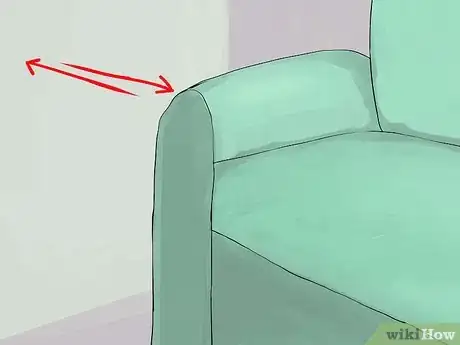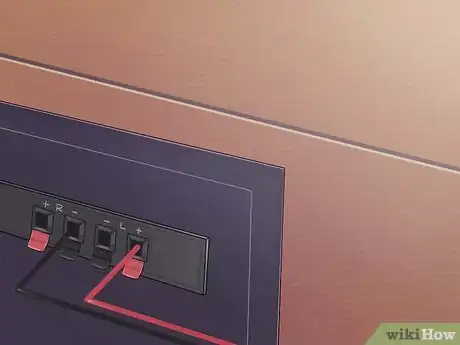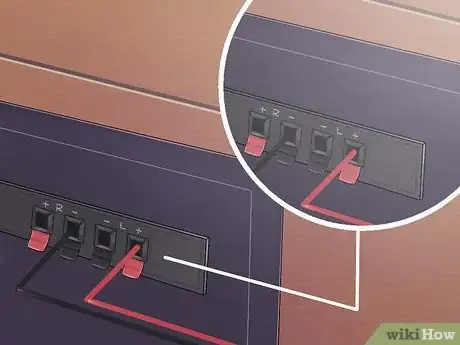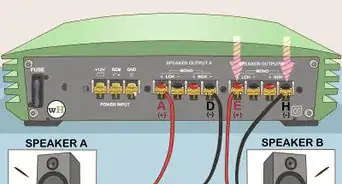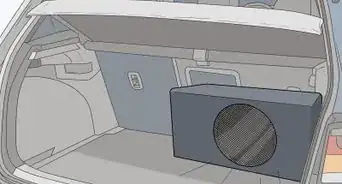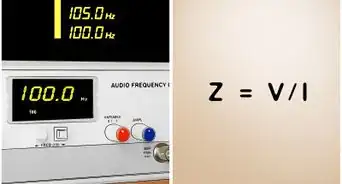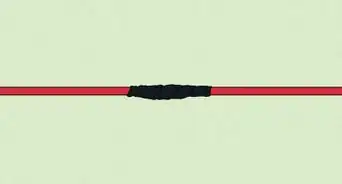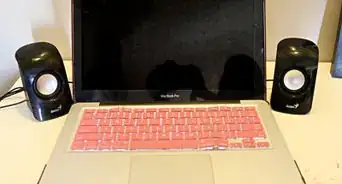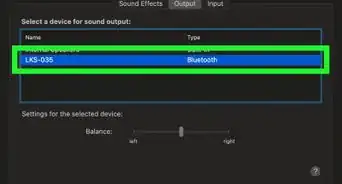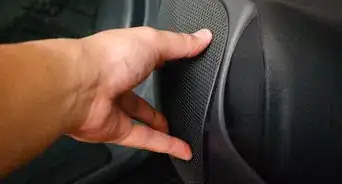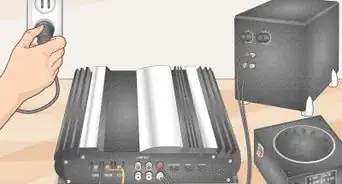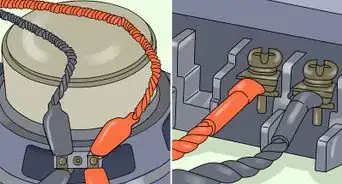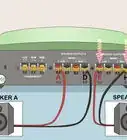This article was co-authored by Jason Williams. Jason Williams is an AV & Security Specialist and the Owner of Williams AV & Security. With more than 35 years of experience, he specializes in home automation and home theater system installations. Jason is an AVIXA Certified Technology Specialist, a CEDIA Certified Cabling & Infrastructure Technician, a Pakedge Certified Network Administrator, and holds a Georgia Low Voltage Unrestricted License.
This article has been viewed 501,359 times.
Each speaker is a little different, but most of them will be wired in a similar way. This wikiHow will show you the most common way of wiring speakers.
Things You Should Know
- If your speakers and amplifier are within 80 feet, you can use 16-gauge wire. For larger areas, use 14-gauge.
- Split the wire down the center a few inches and use scissors or a wire cutter to trim the insulation.
- Wire the speakers while the stereo is turned off to avoid damaging components.
Steps
Optimal Placement
-
1Establish a target listening area. Perhaps this is a couch, love seat or your favorite chair.
-
2Place the target seat in a good position. The ideal placement is halfway between the two side walls and at least a couple of feet back from the exact center of the room.
- Avoid placing the target seat all the way up against the back wall of the room. Flat surfaces such as walls tend to shatter the sound a little before reflecting it, so you will get a better effect if you leave a buffer between the back wall and the target.
Advertisement -
3Hang some thick, rough textured fabric along the wall behind the target listening area. This will help to rectify the distortion of reflected sound.
-
4Place your speakers facing the target area at sixty degree angles. They should be at least one foot out from the back wall and at least two feet away from the side wall for optimal sound quality.
-
5Ensure that the speakers and the target listening area are all equidistant. This means the distance should be the same between all three parts, creating a perfect equilateral triangle.
Selecting Speaker Wire
-
1Use a tape measure or string to determine the distance from your amplifier to your speakers. This will tell you how much speaker wire will be required for the job.
-
2Keep in mind that if your speakers and your amplifier are in the same room, 16-gauge wire is inexpensive and will be sufficient. Longer distances require a thicker wire because of the increased risk of a power failure. For distances between 80 to 200 feet (24.4 to 61 m), you need a 14-gauge wire. Distances greater than 200 feet (61 m) require the thicker 12-gauge wire.
- 12-gauge wire may be used in any speaker setup, even if the distance between the amplifier and the speakers is not terribly great. Some audiophiles swear by the extra quality and durability you get for the price.
-
3Purchase the wire that you have determined is correct for your needs. It never hurts to grab a little extra. You never know when you might need to extend the wires.
Connecting a Receiver
-
1Make sure all your components are completely unplugged. No signal should be running through anything while you hook up speakers.
-
2Prepare your wires for connection. Examine the wire and take note of any differences between coloring on either half. Is one half of the insulation colored red, and the other black? Is the insulation clear with subtle differences in the colors of the wire beneath? This information will be useful later.
-
3Split the wire down the center for a couple of inches. Then use wire cutters or scissors to trim away the insulation around the first inch of each wire. This should leave you with a length of exposed wire at the end of each section.
- Keep the ends of all the wires separated throughout this process. Bend the exposed sections away from each other in a Y shape before connecting them to anything. Make sure the metal at the end of each exposed section is twisted to a point for easy insertion.
-
4Determine how the wires are to be connected to the speakers. Some speakers come with wire sticking out of a hole in the back of the cabinet. Others have a row of little sockets for you to connect wires to. It should match a row of sockets on the back of your amplifier which looks something like this:
-
5Insert the wires into the corresponding sockets. It is important to keep things consistent throughout this step on a couple of different levels.
- Look for "L" and "R" to indicate the left and right speakers. Be certain you are wiring the speaker on the right side of your rig to the socket labeled "R" on the back of your amplifier. Same goes for left and "L".
- Take advantage of the color coding on the sockets when connecting wires. This will help you to make sure the polarity (+ vs - charge) is consistent throughout your rig. It does not matter which end of the wire you use for black or red, only that you remain consistent.
-
6Fasten the connected wires into place. This is usually done using the colored switches somewhere along the outside of each socket.
- Confirm that each wire is leading from red to red and black to black. You should do this before giving power to the system. It never hurts to be extra sure since wiring inconsistencies can ruin your equipment. A fully connected rig looks like this:
-
7Make sure you hide the wires or tape them to the floor. This will prevent people from tripping over them and accidentally ripping the wires out of their sockets.
Community Q&A
-
QuestionHow far do I split the red and black speaker wire to hook it up to my receiver?
 Community AnswerYou only need to pull them far apart enough to be able to get each wire into speaker terminals. Make sure to insert each wire fully into the right terminal, and make sure both are secure. Also, don't let the strands from the red and black wires touch each other, or you might blow your receiver.
Community AnswerYou only need to pull them far apart enough to be able to get each wire into speaker terminals. Make sure to insert each wire fully into the right terminal, and make sure both are secure. Also, don't let the strands from the red and black wires touch each other, or you might blow your receiver. -
QuestionCan I connect any speakers to any amplifier?
 Community AnswerIf the amp is too powerful for the speaker, the speaker could be damaged. If the speaker's impedance, measured in ohms, causes too great of a draw on the amp, the amp could be damaged. Check the markings on the back of the amp and speakers. If the power-handling capability, in watts, of the speakers is greater than the amp's max output, you are fine in the power department. Regarding impedance, make sure the speaker impedance is greater than what the amp expects.
Community AnswerIf the amp is too powerful for the speaker, the speaker could be damaged. If the speaker's impedance, measured in ohms, causes too great of a draw on the amp, the amp could be damaged. Check the markings on the back of the amp and speakers. If the power-handling capability, in watts, of the speakers is greater than the amp's max output, you are fine in the power department. Regarding impedance, make sure the speaker impedance is greater than what the amp expects. -
QuestionWhat does "E" represent on a 3-way passive crossover? (The input side consists of 2 poles: IN and "E". Output side: T, W, "E" and M.)
 Community AnswerE stands for Earth, a British term for what people in the US call Ground. It's good that there are two input poles, as you would connect the back wire to earth (E) and the other red wire to IN. For the woofer, midrange and tweeter speakers, connect all three of their black wires to the output E, and then the woofer red to W, midrage red to M, and the tweeter red to T.
Community AnswerE stands for Earth, a British term for what people in the US call Ground. It's good that there are two input poles, as you would connect the back wire to earth (E) and the other red wire to IN. For the woofer, midrange and tweeter speakers, connect all three of their black wires to the output E, and then the woofer red to W, midrage red to M, and the tweeter red to T.
References
About This Article
1. Measure the distance from your amplifier to your speaker, then buy enough wire.
2. Ensure that everything is unplugged. If it isn't, unplug it.
3. Split the wire down the center a few inches.
4. Insert the wires into the corresponding sockets, and fasten them into place.
5. Hide the wires or tape them to the floor.

